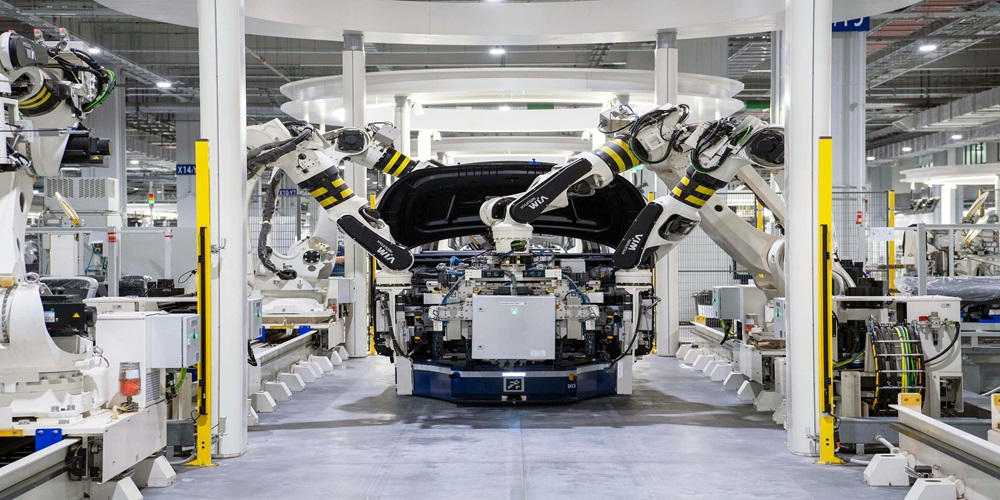The Impact of Boston Dynamics on Robotics and AI

Welcome to the fascinating world of robotics, where innovation meets imagination! In this blog post, we’ll delve into the groundbreaking contributions of Boston Dynamics—a company that has redefined what’s possible in robotics and artificial intelligence. With their awe-inspiring creations like Spot the robotic dog and Atlas the humanoid robot, they are not just building machines; they’re shaping a future where robots can assist us in ways we never thought possible. Whether you’re a tech enthusiast or simply curious about how these advancements will impact our everyday lives, join us as we explore the profound influence of Boston Dynamics on the evolution of intelligent machines and their role in transforming industries worldwide. Buckle up—it’s going to be an exhilarating ride through cutting-edge technology!
Boston Dynamics and their technological advancements in robotics and AI
In a world where technology evolves at lightning speed, few companies have captured our imagination like Boston Dynamics. Known for their awe-inspiring robots that mimic human movement and animal agility, they’ve redefined what we thought was possible in robotics and artificial intelligence. From four-legged companions to bipedal marvels that can navigate complex terrains, Boston Dynamics is not just pushing boundaries; they are obliterating them. As we delve into the impact of Boston Dynamics on robotics and AI, prepare to explore a journey filled with innovation, challenges, and groundbreaking advancements that continue to shape industries across the globe.
History of Boston Dynamics and their journey towards becoming a leading company in the field
Boston Dynamics began its journey in the early 1990s. Founded as a spin-off from MIT, it aimed to develop advanced robots inspired by animal locomotion. Early projects focused on dynamic movement, showcasing the potential of robotics.
The company gained attention with BigDog in 2005, designed for military applications. Its ability to traverse rough terrain was groundbreaking and demonstrated what robots could achieve.
In 2013, Google acquired Boston Dynamics, propelling them into the tech spotlight. This partnership fueled innovation and allowed for more ambitious projects.
After several ownership changes, including SoftBank’s acquisition in 2017, Boston Dynamics continued to refine its robotic creations. Each evolution brought unique capabilities that pushed boundaries further than ever before.
Today, they stand at the forefront of robotics development. Their commitment to advancing technology has established them as leaders in this rapidly evolving field.
How their creations like Spot, Atlas, and BigDog have revolutionized the robotics industry
Boston Dynamics has set a new standard in robotics with its groundbreaking creations. Spot, the agile robot dog, showcases exceptional mobility and adaptability across diverse terrains. It can navigate tight spaces and perform tasks that would be challenging for traditional machines.
Atlas takes it a step further with its impressive balance and agility. This humanoid robot can walk, run, jump, and even perform parkour maneuvers. Its design emphasizes versatility and human-like movement, opening doors to numerous applications.
BigDog revolutionizes heavy lifting by serving as an autonomous pack mule for military operations. Its ability to traverse rough landscapes while carrying substantial loads makes it invaluable in logistics.
These innovations have not only advanced robotic capabilities but also inspired industries to rethink automation strategies. The fusion of sophisticated engineering with practical functionality marks a significant leap forward in how we perceive robotics today.
The importance of incorporating AI into robotics and how Boston Dynamics has done it successfully
Incorporating AI into robotics has transformed how machines interact with their environments. Boston Dynamics excels at this integration, enhancing robot capabilities through advanced algorithms and machine learning.
Their robots can navigate complex terrains, perform intricate tasks, and adapt to unforeseen challenges. This ability allows them to function autonomously in real-world scenarios. Spot, for instance, uses AI not just for mobility but also for perception. It can identify objects and avoid obstacles seamlessly.
Atlas showcases a different aspect of AI’s impact—dynamic decision-making. The humanoid robot executes parkour moves by analyzing its surroundings in real-time. This level of agility mirrors human-like responses.
Boston Dynamics’ approach illustrates the synergy between robotics and artificial intelligence. By pushing boundaries together, they redefine what’s possible in automation and beyond. Their innovations pave the way for future advancements across various industries.
Real-world applications of Boston Dynamics’ robots in various fields such as healthcare, military, and manufacturing
Boston Dynamics’ robots are making significant strides across various industries. In healthcare, robots like Spot assist in patient monitoring and data collection. Their ability to navigate complex environments is invaluable for hospitals looking to streamline operations.
In the military sector, Boston Dynamics has developed advanced robotic systems that support reconnaissance missions and logistics. With their agility and strength, these machines can perform tasks that would be dangerous for human soldiers.
Manufacturing also benefits from robotics innovation. Robots like Atlas can handle materials on assembly lines or execute repetitive tasks with precision. This not only boosts efficiency but reduces workplace injuries.
These applications demonstrate how Boston Dynamics is redefining roles within sectors traditionally reliant on human labor while pushing the boundaries of what robotics can achieve in real-world scenarios.
Controversies surrounding Boston Dynamics’ designs and ethical concerns about using them in society
Boston Dynamics has sparked heated debates around the ethical implications of their robots. The advanced capabilities of machines like Spot and Atlas raise questions about how they might be used in surveillance, military operations, or crowd control.
Critics argue that such technology could lead to an increase in automation-related job losses. As these robots become more integrated into various sectors, workers may feel threatened by their efficiency and precision.
Another concern revolves around safety. With powerful movements and complex tasks, there are fears that accidents could occur when humans interact with these machines.
The potential for misuse also looms large. The idea of deploying robotic systems for policing or warfare evokes unsettling images of autonomous decision-making without human oversight.
As innovations continue to unfold, society must grapple with what it means to coexist with increasingly intelligent machines while ensuring responsible design and use practices remain at the forefront.
The future of robotics and AI with the continued growth of Boston Dynamics
The future of robotics and AI looks more promising than ever, especially with Boston Dynamics leading the charge. Their innovative designs push boundaries, showcasing what robots can achieve in complex environments.
As these machines become smarter, their applications will expand significantly. From agile robots navigating tight spaces to autonomous systems working alongside humans, the possibilities are endless.
Boston Dynamics is not just creating robots; they’re crafting intelligent companions that enhance productivity across industries. Imagine a construction site where robotic assistants lift heavy materials or a hospital room serviced by an efficient delivery robot.
Collaboration between AI and robotics will redefine efficiency and safety standards. With continuous advancements in machine learning algorithms, we’ll see even greater adaptability in real-world scenarios.
This synergy has the potential to transform everyday tasks, making them safer and more efficient for all involved. As Boston Dynamics continues its innovation journey, it sets the stage for a new era in technology-driven solutions.
Conclusion
In conclusion, the advancements made by Boston Dynamics in robotics and AI have had a significant impact on various industries and our everyday lives. From revolutionizing manufacturing processes to assisting in search and rescue operations, their innovative technology has proven to be groundbreaking. As they continue to push boundaries and develop more advanced robots, it will be interesting to see how this will further shape our future. One thing is for sure – Boston Dynamics is leading the way towards a more automated world.


